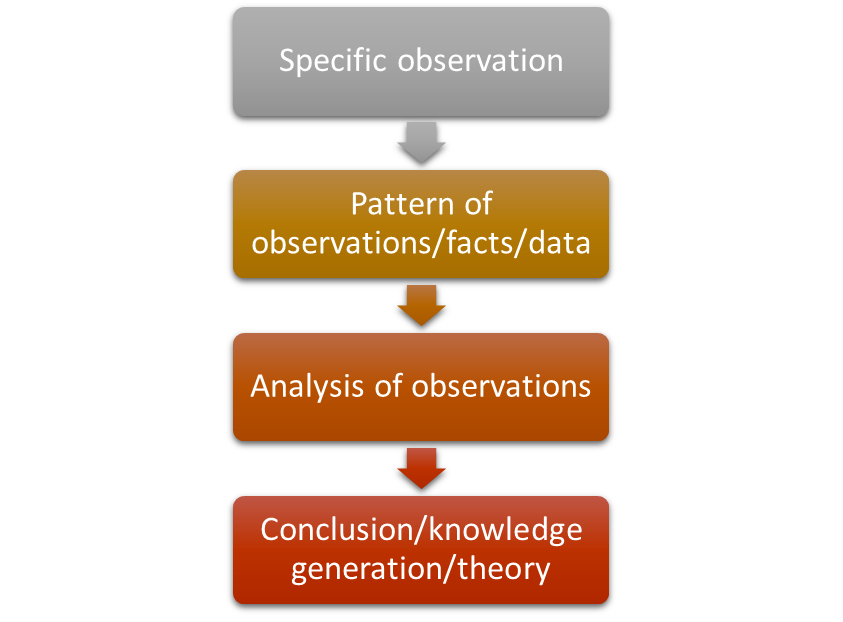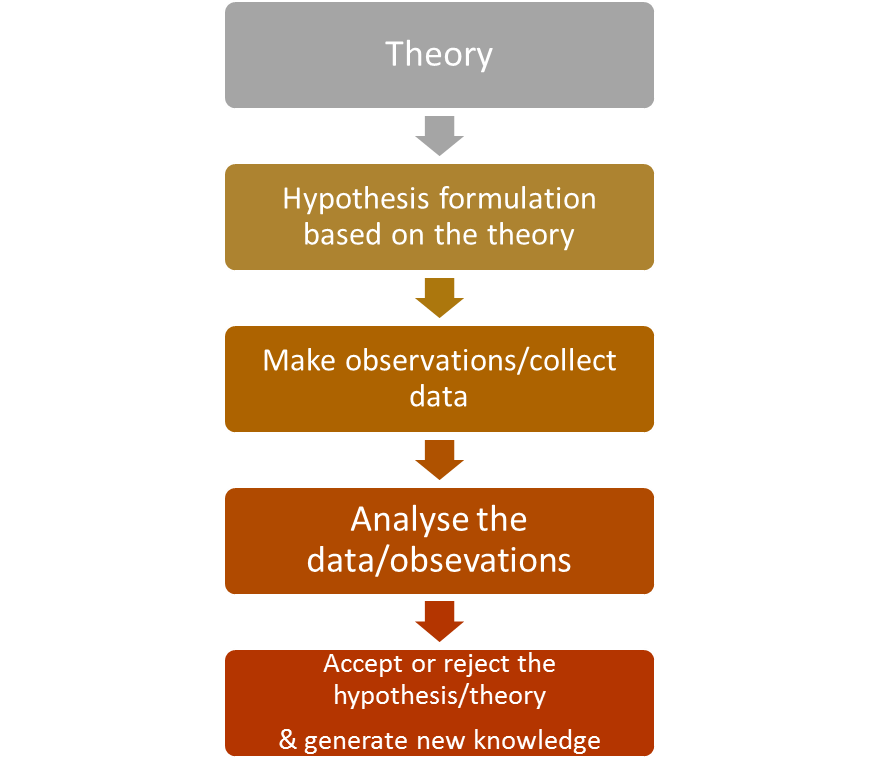Introduction
In social work research or research in any other social sciences, the researcher follows any two approaches towards a study, i.e, Inductive or Deductive. Though these two approaches are independent of each other for a particular study; but for understanding a social phenomena these two approaches forms a cyclic process. Let us try to understand these two in detail.
Inductive Approach
In simple terms when the researcher has to move from general to specific, this approach is applied. Let us try to understand this with an example.
Example 1
A researcher observes that a drug addict is HIV positive. He becomes curious and wants to know whether there is any relationship between HIV and drug abuse. He goes on to make several observations with drug addicts to find out how many are HIV positive. The researcher makes a significant number of observations and finds that 90%of the drug addicts were HIV positive. He thus adds to the knowledge base that “there is a direct correlation between drug addiction and HIV infection”.
In this case the researcher moved from a general observation to a specific statement or theory.
Example 2
The researcher would observe that an economically backward/poor person is uneducated, makes ‘n’ number of similar observations and conclude to give a generalization that all poor people are uneducated.
Key features of Inductive research
- In this approach hypothesis testing is not carried out.
- The results are applicable to a small population.
- Makes use of qualitative and quantitative data.
- Provides a base for deductive research
- Focus is on exploring new phenomena or looking at previously researched phenomena with a new perspective.
Deductive Approach
As stated above, in simple terms the deductive approach moves from specific statements to general theory. Let’s try to understand it with example.
Example 1
A researcher comes across a knowledge base that “drug addicts are prone to HIV infection”. Now the researcher wants to test this knowledge whether this is true or false. Therefore, he makes some hypotheses to prove that it is either true or false. Based on the hypothesis he selects a population and makes observations. If he observes that 90% of drug addicts are HIV positive, then the hypothesis is true and he approves the knowledge base. If he makes observations and finds out that only 20%of the drug addicts are HIV positive, then the hypothesis is false and he rejects the knowledge base or the theory.
Example 2
The researcher would start with an existing knowledge that “all poor people are uneducated” . To test this knowledge he would formulate a hypothesis ‘lack of formal education hampers skill building leading to poverty’. To test this hypothesis the researcher would collect ‘n’ number of data and analyze it. The hypothesis can be found to be true or false or null based on the observations. For instance, a significant number of the observations show that all poor people are not uneducated. In this case the hypothesis is rejected.
Key features of Deductive approach
- This type of research uses quantitative data and its analysis
- Findings can be generalized to a larger population.
- Takes less time than an inductive approach.
- Focus is on causality and hypothesis testing
Basic steps followed in Inductive and deductive approach


Hypothesis
An important feature of deductive approach is the hypothesis testing. Hypotheses are statements derived from the existing theory which has to be tested. These statements often consist of relationships between two variables. For example
“Drug addiction leads to HIV infection”
Here the two variables are : drug addiction and HIV infection.
The statement whose answer is to be found out is called the alternate hypothesis. During formulation of a hypothesis another statement is formed which is opposite of the alternate hypothesis. This is called the null hypothesis. For example
“Drug addiction does not lead to HIV infection”.
During the study when the data is analysed the result either supports the alternate hypothesis or it does not support it. If it supports the alternate hypothesis then it is accepted as true and the null hypothesis is false. Vice versa if the result does not support the alternate hypothesis then it is rejected as being false and the null hypothesis is accepted as true.
Type 1 & Type 2 error
Type 1 and Type 2 errors are two types of errors that can occur in statistical hypothesis testing in deductive research.
Type 1 error, also known as a “false positive,” occurs when the null hypothesis (H0) is true, but is rejected. This type of error is equivalent to claiming that there is a significant difference when there is actually no difference. The probability of committing a Type 1 error is represented by the level of significance, also known as alpha (α).
Type 2 error, also known as a “false negative,” occurs when the null hypothesis is false, but is not rejected. This type of error is equivalent to claiming that there is no significant difference when there is actually a difference. The probability of committing a Type 2 error is represented by beta (β).
It is important to consider both types of errors in research, as they can both have significant consequences. For example, in medical research, a Type 1 error could lead to the approval of a potentially harmful drug, while a Type 2 error could result in the rejection of a potentially beneficial treatment. Researchers can control the probability of committing a Type 1 error by setting the level of significance, but it is not possible to completely eliminate the risk of committing a Type 2 error.
Conclusion
Since social work research is concerned with generating new knowledge and to test the existing theory or knowledge base, inductive and deductive approaches are often used simultaneously and is a cyclic process.

